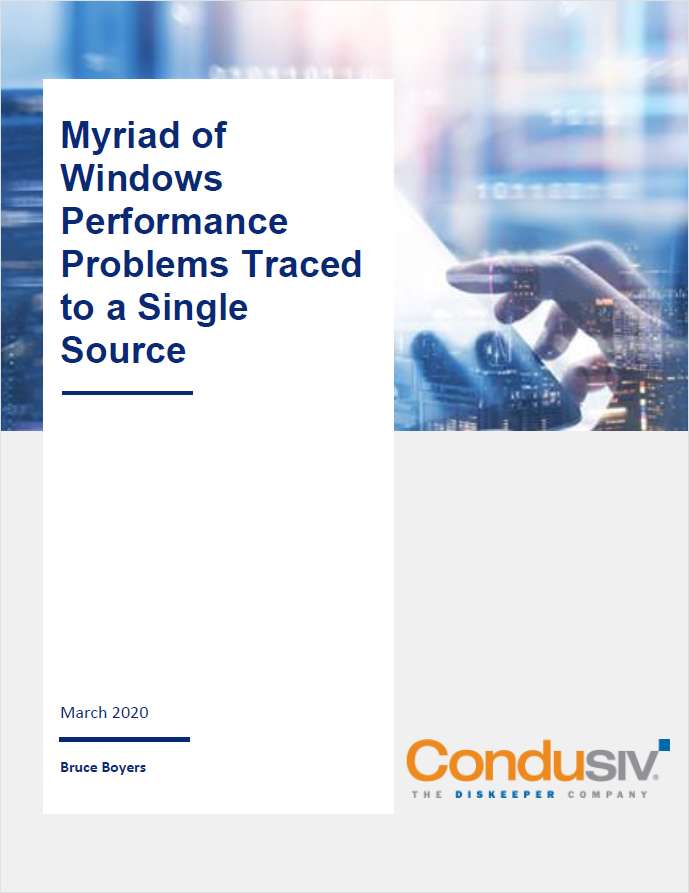Request Your Free Article Now:
"A Myriad of Windows Performance Problems Traced to a Single Source"
Believe it or not, 12 substantial Windows performance issues that can cause the most frustration and chew up valuable time can be directly traced to a single source.
All of the issues that cost you peace of mind can be traced back storage I/O efficiencies.
As great as virtualization has been great for server efficiency, one of the biggest downsides to virtualization is that it adds complexity to the data path – otherwise known as the I/O blender effect that mixes and randomizes I/O streams.
There are 2 severe I/O inefficiencies causing this.
First, is caused by the behavior of the Windows file system. It will tend to break up writes into separate storage I/Os and send each I/O packet down to the storage layer separately and this causes I/O characteristics that are much smaller, more fractured, more random than they need to be – this along with the I/O Blender effect noted above is the perfect trifecta for bad storage performance.
This is a “death by a thousand cuts” scenario that is like pouring molasses on your systems – everything is running, but not running nearly as fast as it could.
You could opt to throw more hardware at the problem, but this is expensive and disruptive and can be premature – it is much better to tune what you already own to get the performance you should be.
Second, is storage I/O contention. This happens when you have multiple systems all sharing the same storage resource.
Windows is breaking up that I/O profile into a much smaller, more fractured, more random I/O profile than it needs to be. If you just clean that up on one VM then all of the data from that one VM to the host is all streamlined, but then you have all the data from neighbor VMs that are still noisy and causing contention.
As you can see, your performance is not only penalized once, but twice by storage I/O efficiencies. This means systems process workloads about 50% slower than they should on the typical Windows server because far more I/O is needed to process any given workload. This has been found to be to be the cause of a host of Windows performance problems such as those mentioned earlier.
Read on to find out about our solution, DymaxIO,
Offered Free by: Condusiv Technologies
See All Resources from: Condusiv Technologies







